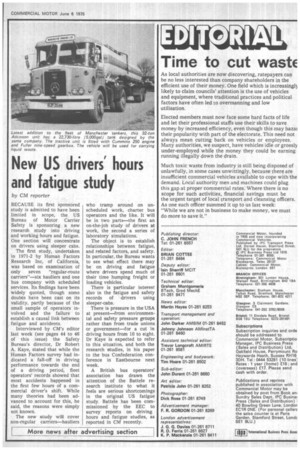Time to cut wast€
Page 7

If you've noticed an error in this article please click here to report it so we can fix it.
As local authorities are now discovering, ratepayers can be no less interested than company shareholders in the efficient use of their money. One field which is increasing13 likely to claim councils' attention is the use of vehicles and equipment, where traditional practices and political factors have often led to overmanning and low utilisation.
Elected members must now face some hard facts of life and let their professional staffs use their skills to save money by increased efficiency, even though this may hazai their popularity with part of the electorate. This need not always mean cutting back on vehicles or employees. Many authorities, we suspect, have vehicles idle or grossly under-employed while the money they could be earning running illegally down the drain.
Much toxic waste from industry is still being disposed of unlawfully, in some cases unwittingly, because there are insufficient commercial vehicles available to cope with the demand. Local authority men and machines could plug this gap at proper commercial rates. Where there is no scope for such activities, financial savings must be the urgent target of local transport and cleansing officers. As one such officer summed it up to us last week: "While we are not in business to make money, we must do more to save it."


















































































































